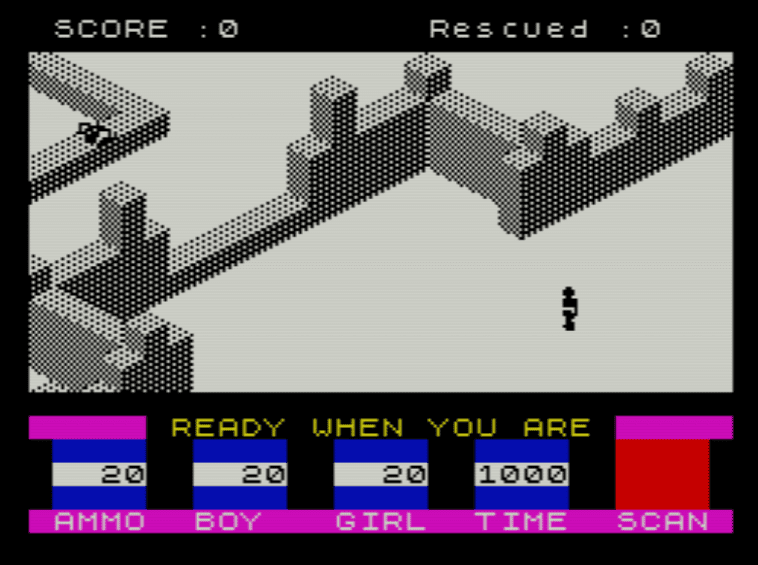Isometric graphics give 2D games the illusion of depth. Mark Vanstone explains how to make an isometric game map of your own.
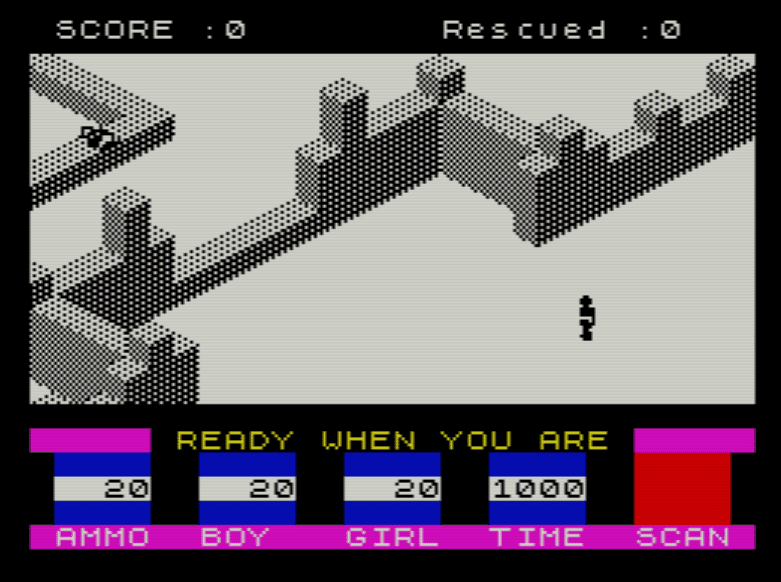
Published by Quicksilva in 1983, Ant Attack was one of the earliest games to use isometric graphics. And you threw grenades at giant ants. It was brilliant.
Isometric projection
Most early arcade games were 2D, but in 1982, a new dimension emerged: isometric projection. The first isometric game to hit arcades was Sega’s pseudo-3D shooter, Zaxxon. The eye-catching format soon caught on, and other isometric titles followed: Q*bert came out the same year, and in 1983 the first isometric game for home computers was published: Ant Attack, written by Sandy White.
Ant Attack
Ant Attack was first released on the ZX Spectrum, and the aim of the game was for the player to find and rescue a hostage in a city infested with giant ants. The isometric map has since been used by countless titles, including Ultimate Play The Game’s classics Knight Lore and Alien 8, and my own educational history series ArcVenture.
Let’s look at how an isometric display is created, and code a simple example of how this can be done in Pygame Zero — so let’s start with the basics. The isometric view displays objects as if you’re looking down at 45 degrees onto them, so the top of a cube looks like a diamond shape. The scene is made by drawing cubes on a diagonal grid so that the cubes overlap and create solid-looking structures. Additional layers can be used above them to create the illusion of height.
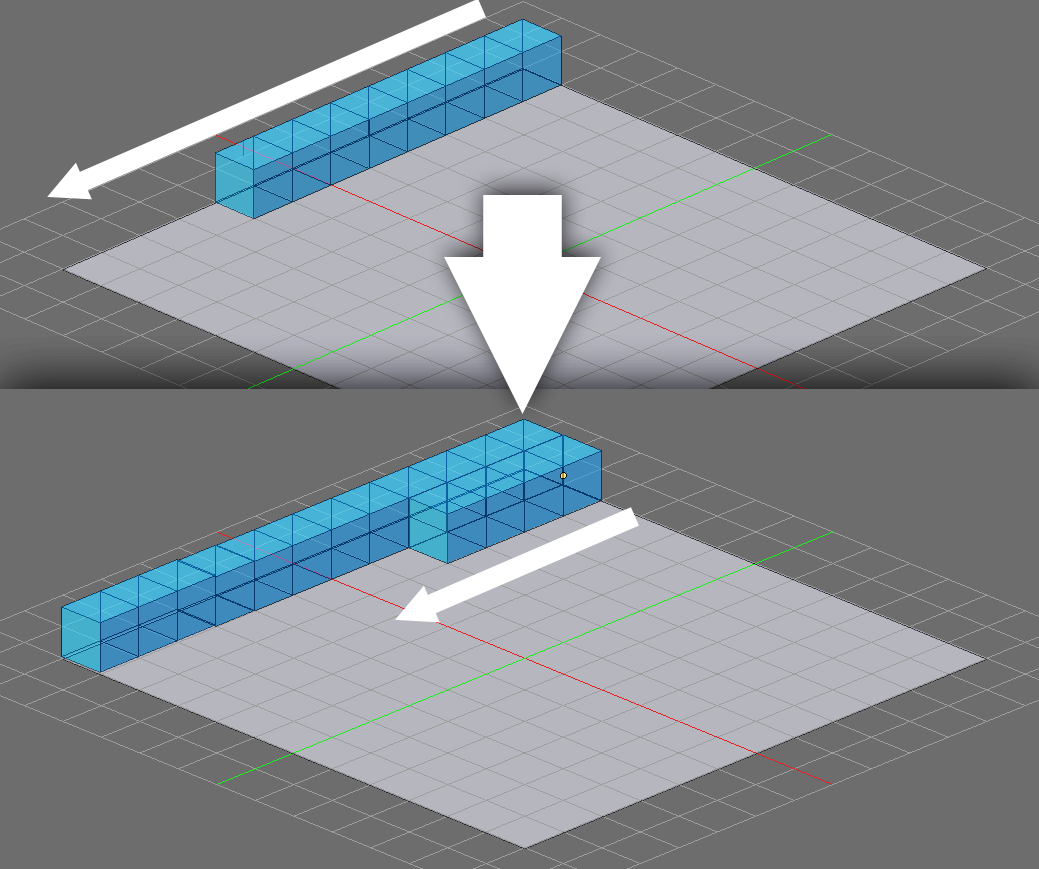
Blocks are drawn from the back forward, one line at a time and then one layer on top of another until the whole map is drawn.
The cubes are actually two-dimensional bitmaps, which we start printing at the top of the display and move along a diagonal line, drawing cubes as we go. The map is defined by a three-dimensional list (or array). The list is the width of the map by the height of the map, and has as many layers as we want to represent in the upward direction. In our example, we’ll represent the floor as the value 0 and a block as value 1. We’ll make a border around the map and create some arches and pyramids, but you could use any method you like — such as a map editor — to create the map data.
To make things a bit easier on the processor, we only need to draw cubes that are visible in the window, so we can do a check of the coordinates before we draw each cube. Once we’ve looped over the x, y, and z axes of the data list, we should have a 3D map displayed. The whole map doesn’t fit in the window, and in a full game, the map is likely to be many times the size of the screen. To see more of the map, we can add some keyboard controls.
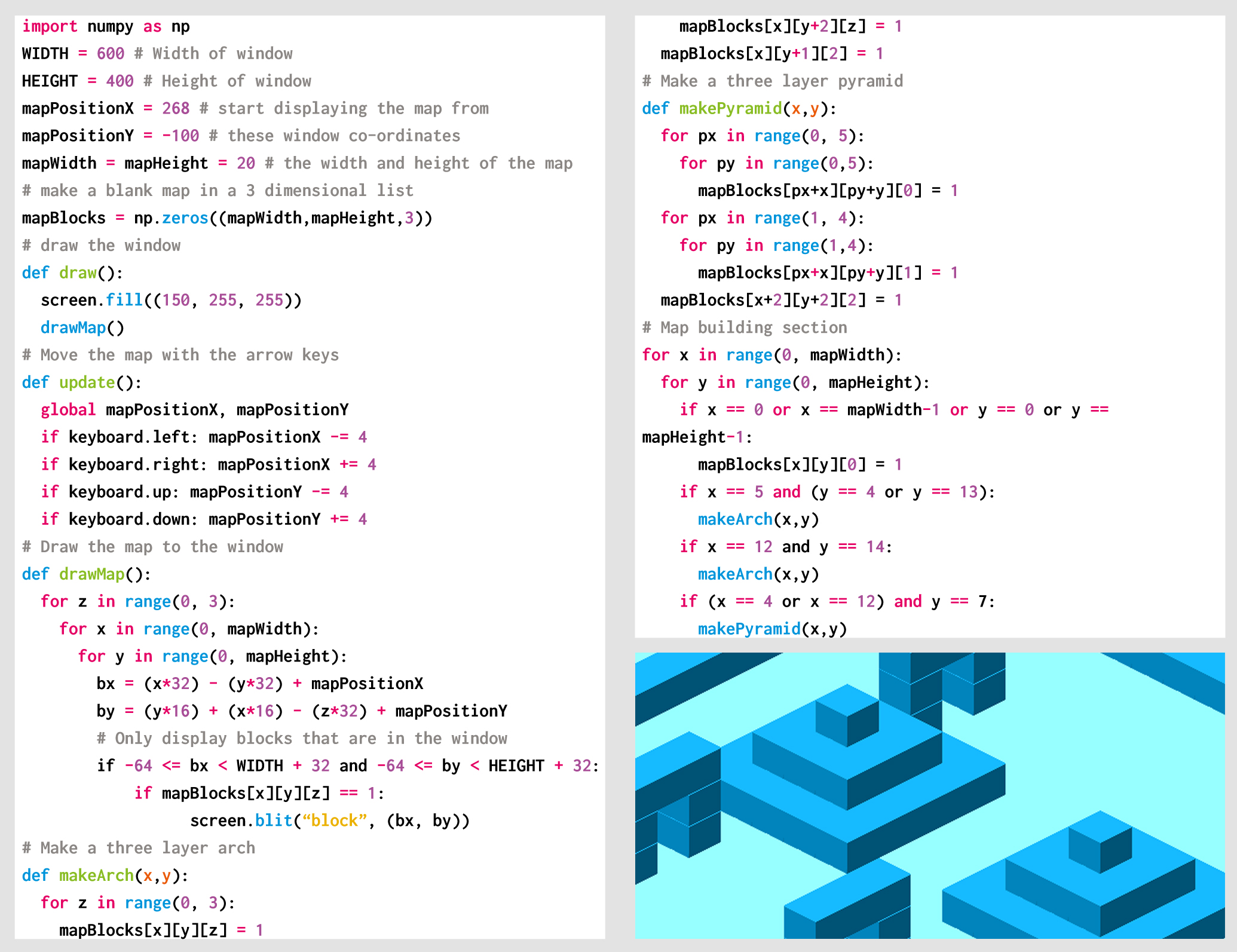
Here’s Mark’s isometric map, coded in Python. To get it running on your system, you’ll first need to install Pygame Zero. And to download the full code, visit our Github repository here.
If we detect keyboard presses in the update() function, all we need to do to move the map is change the coordinates we start drawing the map from. If we start drawing further to the left, the right-hand side of the map emerges, and if we draw the map higher, the lower part of the map can be seen.
We now have a basic map made of cubes that we can move around the window. If we want to make this into a game, we can expand the way the data represents the display. We could add differently shaped blocks represented by different numbers in the data, and we could include a player block which gets drawn in the draw() function and can be moved around the map. We could also have some enemies moving around — and before we know it, we’ll have a game a bit like Ant Attack.
Tiled
When writing games with large isometric maps, an editor will come in handy. You can write your own, but there are several out there that you can use. One very good one is called Tiled and can be downloaded free from mapeditor.org. Tiled allows you to define your own tilesets and export the data in various formats, including JSON, which can be easily read into Python.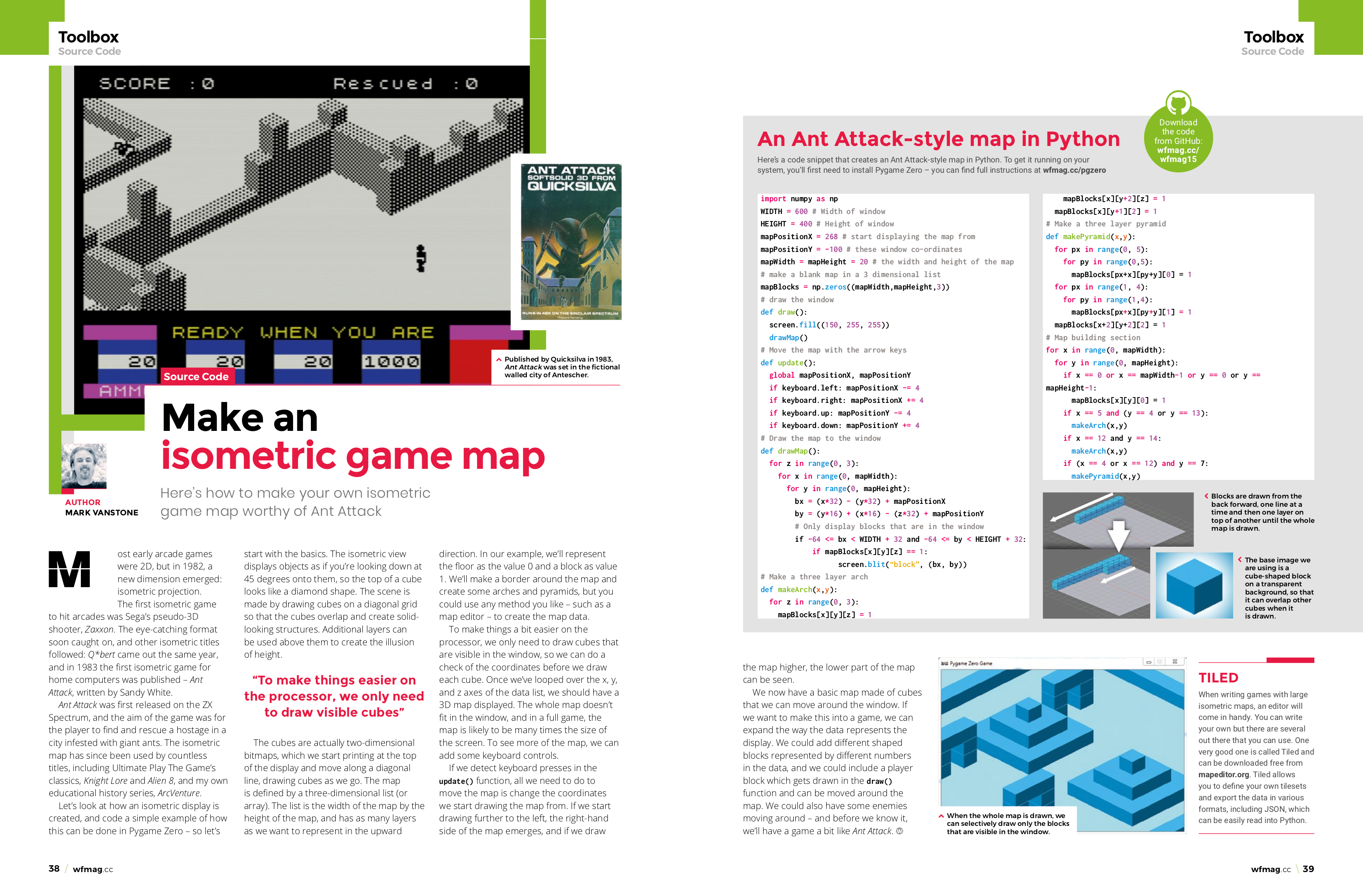
Get your copy of Wireframe issue 15
You can read more features like this one in Wireframe issue 15, available now at Tesco, WHSmith, and all good independent UK newsagents.
Or you can buy Wireframe directly from Raspberry Pi Press — delivery is available worldwide. And if you’d like a handy digital version of the magazine, you can also download issue 15 for free in PDF format.
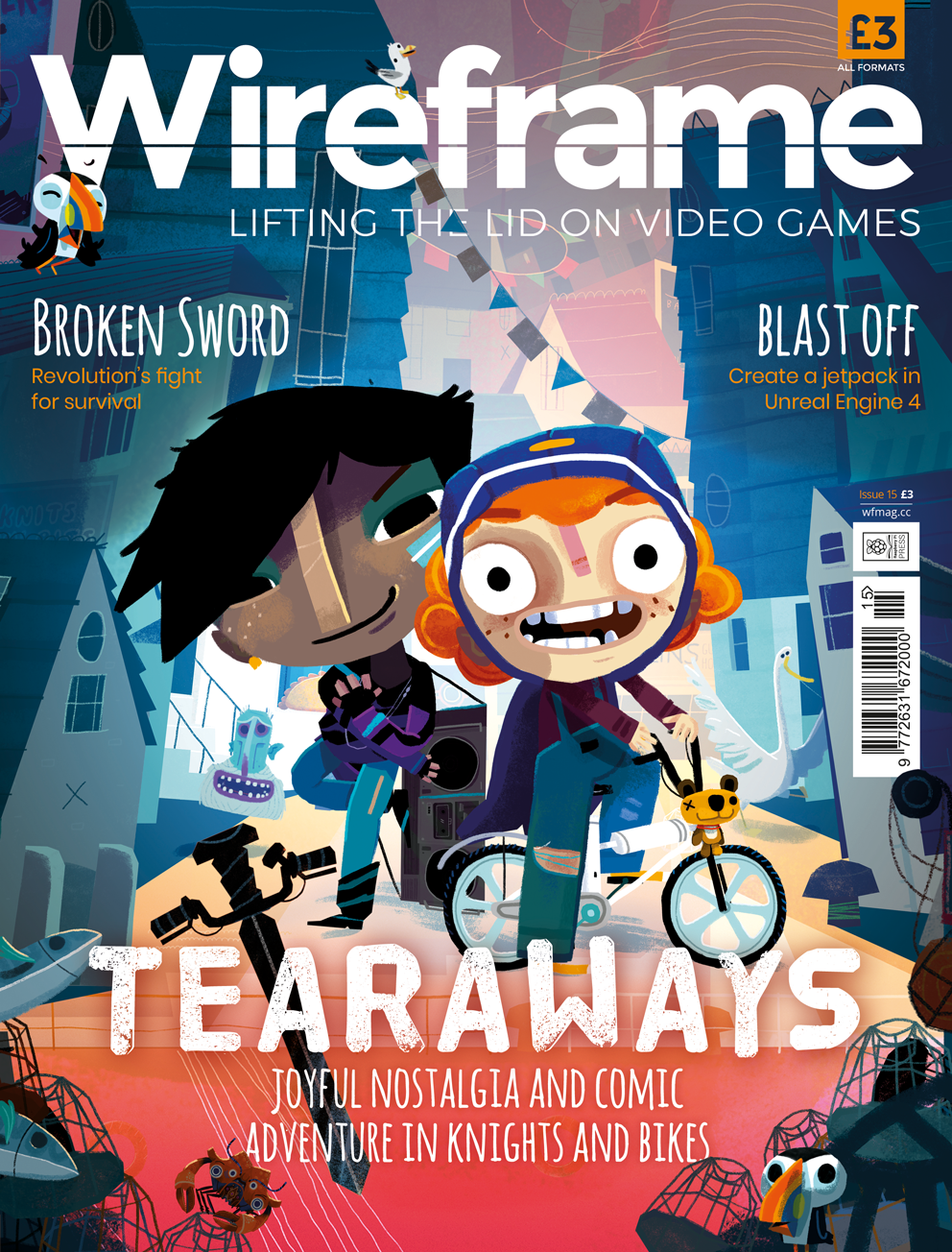
Make sure to follow Wireframe on Twitter and Facebook for updates and exclusive offers and giveaways. Subscribe on the Wireframe website to save up to 49% compared to newsstand pricing!
Website: LINK

